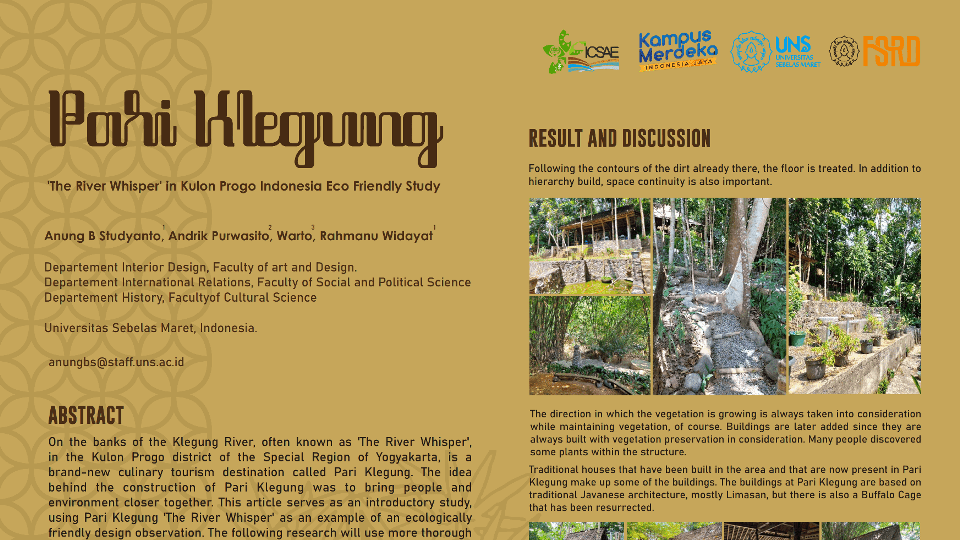Home » Poster Show 1 » ID118 Ecoprinting with Weed Plant: Utilization of Cacabean
Paper ID: 118
Ecoprinting with Weed Plant: Utilization of Cacabean (Ludwigia octavalvis) and Ketul (Biden pilosa) as Ecoprint Natural Dyes
K Y Pratiwi1 and A N Sulistyati1
1Faculty of Art and Design, Sebelas Maret University, Indonesia
Email: apika.nurani@staff.uns.ac.id
The ever increasing of awareness to save the environment among society brings people to change their lifestyle. The textile industry is one of many sectors that is affected by these changes and now has adapted by using a more environmentally friendly raw material. A textile dyeing technique that uses plants as its color medium is called ecoprint. The ecoprint technique includes the process of transferring the shape and color of the leaves, flowers, and stems of plants onto its media, the fabric. Plants that can be used for ecoprint are plants that are rich of tannin content. Weeds are plants that can grow in any place and its existence are often considered as a hinder due to the fact that it can interfere other cultivated plants as well as human activities. However, this weed plant can actually be used as a raw material for natural textile dyes. The processing of Ludwigia octavalvis and Bidens pilosa weeds as raw materials for ecoprint natural dyes is one of huge leap in development of textile colorings which also helps increase the value of weeds. The method used for this research is a qualitative method complemented with data collection technique in the form of observation, interviews, and experiments.



